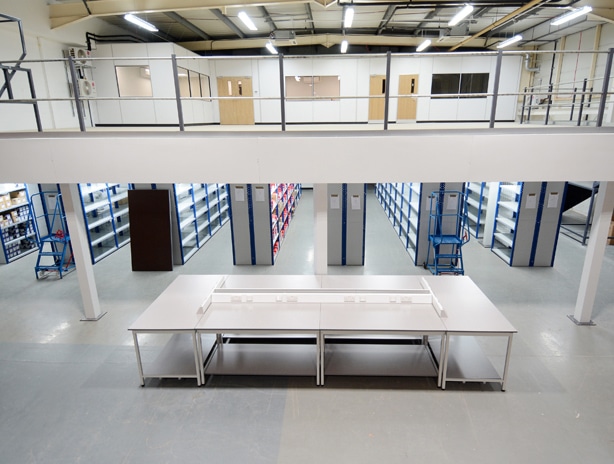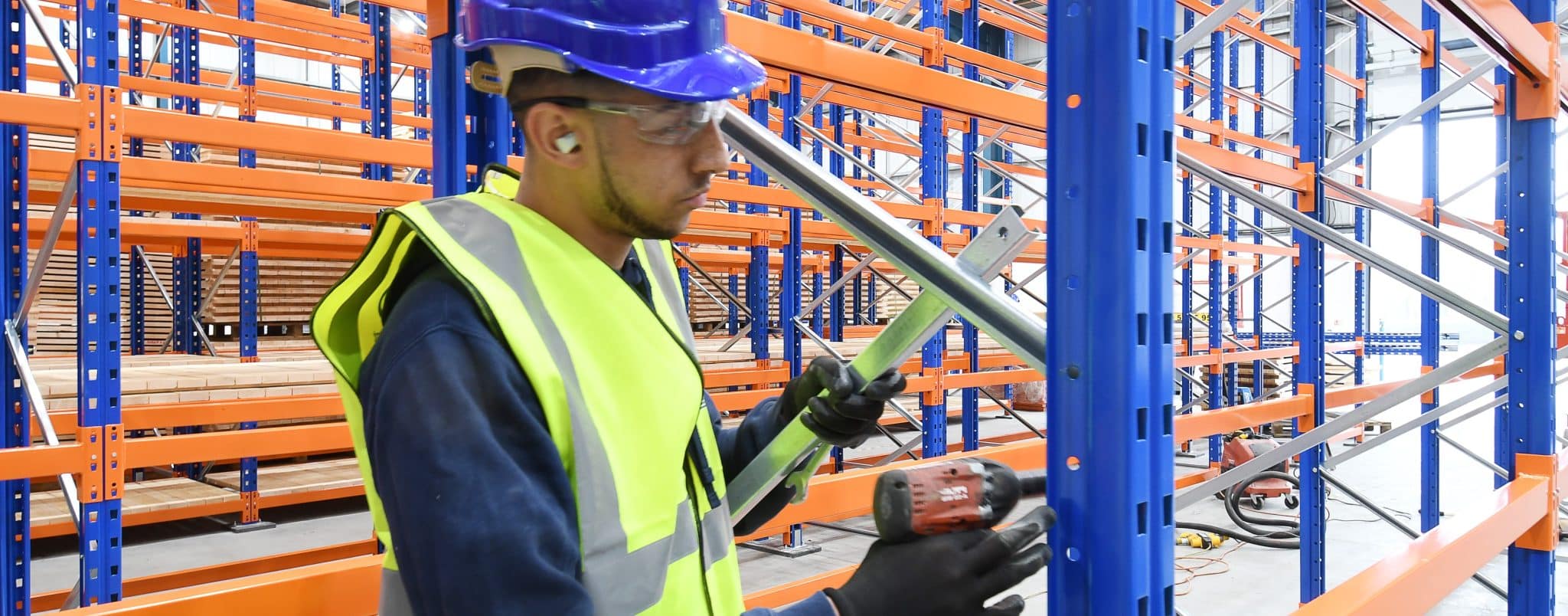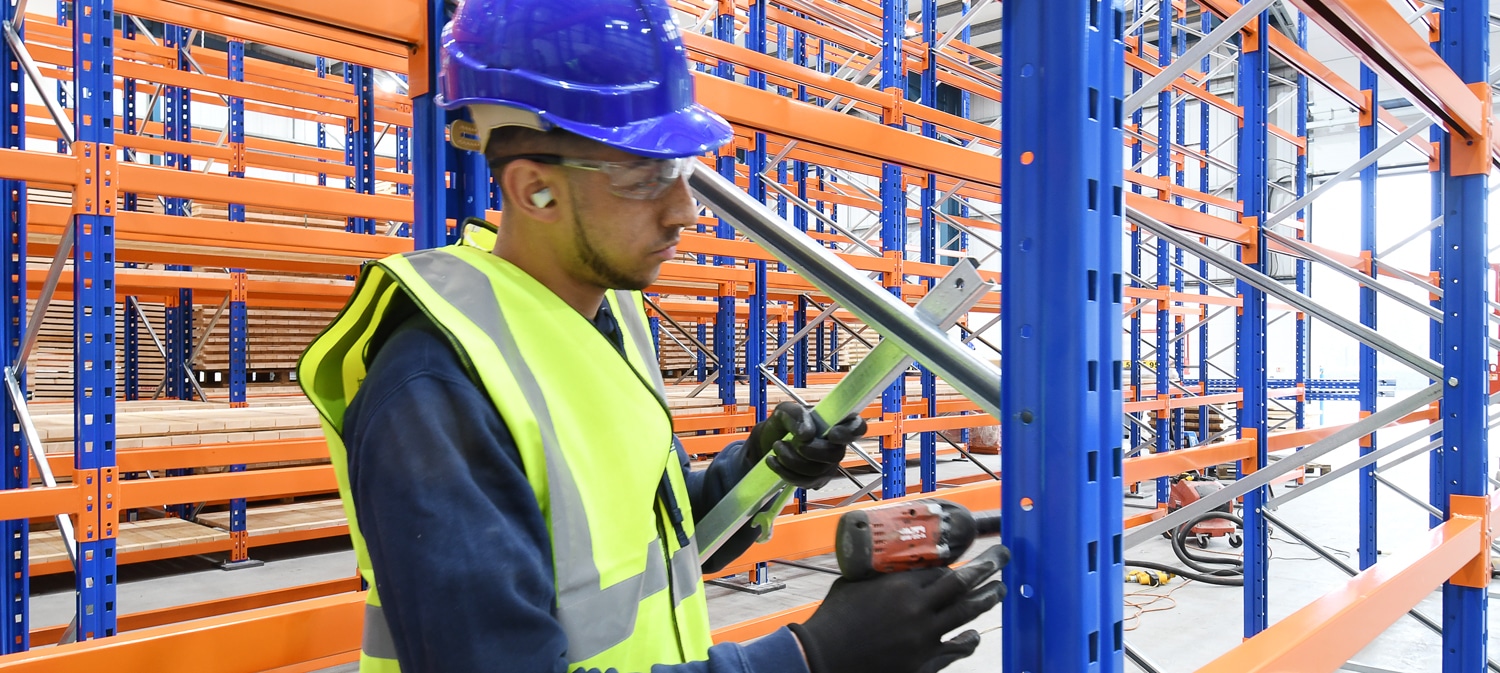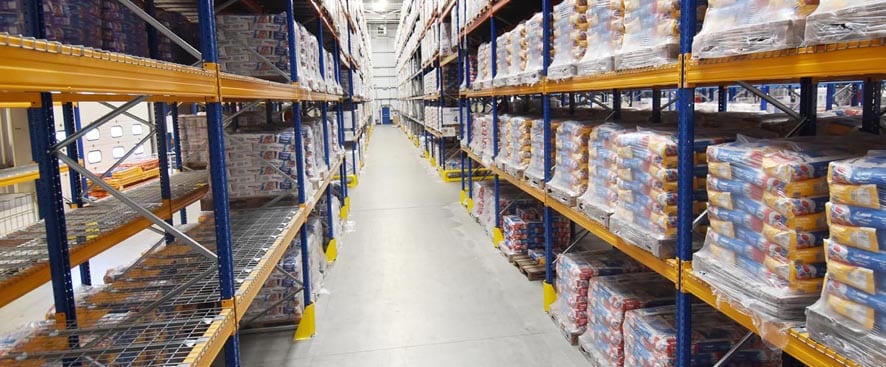Oct
Transform Your Warehouse Into A Treat This Halloween
- 2024
- Becky
With Halloween lurking around the corner, is it time to see if you are delivering a trick or a treat and consider whether it’s time to transform your warehouse?
At Teepee, we specialize in supplying warehouse systems such as partitioning, racking, mezzanine floors, and safety barriers—solutions that can turn your warehouse into a functional masterpiece, with less fright and more delight! We can show you how to avoid monsters lurking in the aisles and instead treat your warehouse to a hauntingly good transformation that will enhance productivity, and storage capacity, to increase profitability and safety.
1. Clear the Cobwebs: Organize Your Space with Effective Racking Solutions

Don’t let your warehouse feel like you’re navigating a haunted house. Are dark corners making items disappear? Do piles of stock appear to be moving all by themselves? If your warehouse layout is looking more like a horror scene, it might be time to sweep out the cobwebs and go for streamlined and efficient racking.
The best way to get the most out of your warehouse is to go for a bespoke design. That way you can have a racking layout which works perfectly for your business. The design should accommodate stock profiles, and your picking methods, while also enhancing inventory management. It should enhance the journey of stock as it moves through your warehouse, making sure it is easily accessible and seamlessly moves through the space until the moment the order leaves the building.
A bespoke design will also consider the type of storage equipment you need, whether that’s pallet racking for larger goods, narrow aisle racking to increase storage capacity within the footprint of your building or shelving that can fill a tight space in your warehouse.
By getting Teepee to design a racking system tailored to your exact requirements, we’ll take the planning and design weight off your shoulders. Our design will maximise the space in your warehouse and avoid the ghastly scenes of overcrowded aisles and disorganised inventory.
2. Banish Hazards with Safety Barriers

When things go bump in the warehouse, make sure it doesn’t turn into a horror story. Getting suitable protection around high-risk areas can help your warehouse to operate safely while keeping your workers protected from any unexpected scares. It is also a requirement to ensure you comply with current Health & Safety Legislation and Storage Equipment Manufacturers Association (SEMA) recommendations.
The problem is, with so many options on the market, which is the best one for your racking and business? One advantage of working with a supplier like Teepee is that we are product agnostic which means we can supply the best safety equipment to suit your warehouse – regardless of the manufacturer. We offer a range of steel or impact-resistance plastic safety barriers and guarding systems such as racking safety barriers, pedestrian barriers, end-of-aisle racking barriers including upright protection guards, mezzanine floor stanchion guards and protection barriers around machines, offices and building walls. We also offer a bespoke manufacturing service to meet individual needs.
3. Banish the spectre of unused space

If your warehouse is haunted by the lack of storage space or inadequate areas for picking and packing tasks, maybe it’s time to consider how to maximise your warehouse. Any building has constrains with the height and width of the structure, but it is possible to enhance what you have with a few little treats.
There are plenty of options to incorporate into the warehouse that can provide additional storage capacity. With multi-tier racking you build upwards to utilise the space above your head by creating levels and walkways on which you place shelving to create picking lanes. Another option is to introduce some space-saving models such as Push Back racking which operates on a First In Last Out (FILO) system. The racking stores up to 10 pallets deep and can optimise the space by up to 85%. Pallets load onto a gravity roll track that pushes previous pallets to the back, then, when you pick a pallet, the next one behind will move forward. Pallets load and unload from the same aisle picking space and you can store several SKUs without needing to move large quantities of pallets to gain access.
If it’s usable space you’re looking for, you might want to consider adding a mezzanine floor. These structures are custom-built for your needs and can be used for multiple purposes including additional storage, production space and even offices.
4. Divide and Conquer this Halloween with Partitioning Systems

Instead of going up, why not look at casting a spell by dividing the floor space you currently have. After all, a chaotic warehouse layout can make it feel like everything’s closing in on you, much like a claustrophobic haunted house.
Maybe you need to better utilise the space on your factory floor. Perhaps, you’re looking to create extra rooms for dedicated workspaces or offices for private meetings. At Teepee, we can supply bespoke and multi-functional partition walls that solve all your nightmare dilemmas.
Our industrial partitioning solutions offer the flexibility you need to create distinct work zones on your factory floor, ensuring the safety of your employees and enhancing the productivity of your business. Whether you need to section off areas for manufacturing, storage, or office space within your factory, our factory partitioning walls are the ultimate solution for all your partitioning needs. If you already have dedicated office space, we can also provide glass office partitions to enhance your layout.
5. Scare Off Downtime with Regular Inspections and Maintenance

Nothing is more terrifying for a warehouse than unexpected downtime due to damage racking. You can avoid frightful surprises by regularly inspecting your storage equipment.
As a SEMA Approved Member – Advanced, we recommend their advice of following a three-tiered inspection approach.
- Every day your team should be keeping an eye on your racking and reporting if they see any knocks or bumps. Why is this important? Well, your storage equipment is manufactured from lightweight materials and there is a limit to the amount of abuse it can withstand. As explained in HSG76 Warehousing & Storage: A Guide to Health and Safety, any amount of damage can significantly reduce the load-bearing capacity and stability of the racking structure.
- Once a week a nominated member of your team should perform a visual inspection. The role is also known as a Person Responsible for Racking Safety (PRRS) and they should check everyone is following correct usage, record damage levels and implement action on any points. A formal record of their inspection will be written for your records. To prepare your team for damage checking the racking and undertaking the weekly inspection we offer our Racking and Safety Awareness Course.
- At least once a year, you must submit your racking to an Expert inspection. This can only be done by a competent and trained inspector with the correct qualifications for this type of inspection. They will conduct racking and storage assessments while also reporting and making recommendations to maintain the safety of your racking. If you need an expert inspection, get in touch and one of our approved racking inspectors to visit your site. They will produce an electronic report that details damage list by location, a traffic light reporting system for the completion of repair work and photographic evidence for remedial works.
If you want to make your warehouse a fright-free zone this Halloween why not get in touch with Teepee. With over 35 years of experience within the industry, we have the knowledge and skills to discuss your project and determine the best solution for your facility! We can also arrange a free on-site consultation to ensure your warehouse design maximises your business.































 How can pallet racking help your business?
How can pallet racking help your business?








 Can I Install My Own Pallet Racking?
Can I Install My Own Pallet Racking?
